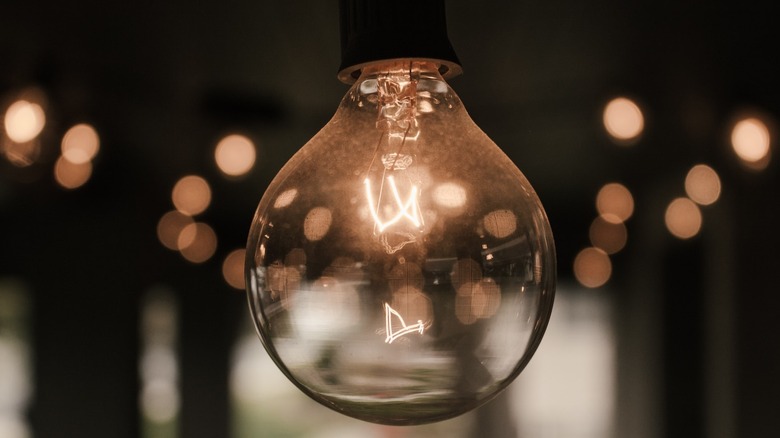How To Clean Your Lightbulbs And How Often
Are you struggling with a mysteriously fading glow in your home? The solution could be hiding not in a timeworn bulb but in a quick and easy dust-busting mission. Polishing your lightbulbs is an essential part of home upkeep that should be undertaken monthly or twice a year, primarily hinging on the bulb's location. Regarding the "how," it calls for more than a gentle touch and some everyday household items. For safety reasons, turn off the light and let the bulb cool. Then, grab a soft, damp cloth and gently wipe away any dust or dirt accumulated on the bulb's surface. A moist cloth and mild dish soap should help with stubborn grime.
But why bother tidying up your lightbulbs? You don't want to live in a gloomy cave, yet that's precisely what happens when you let grime take over. Lightbulbs are like dust and dirt magnets, gradually losing their sparkle as the muck piles up. Filthy lightbulbs operate at half their potential brightness while guzzling the same electricity as their cleaner counterparts. Aside from being more radiant and energy efficient, clean lights look better and last longer. Let's also not forget the oddly satisfying feeling of witnessing a once-filthy bulb shine like new. So, grab your gloves and a soft cloth and work to brighten your luminous orbs.
How to clean your lightbulbs safely
Safety is paramount when handling electrical components. Never attempt to clean a bulb that is still connected or hot to the touch unless you're a fan of burns, electrocution, or broken bulbs. Using gloves or a soft, lint-free cloth when handling halogen lamps is highly advisable. That's because oils from your skin can cause hot spots, reducing the bulb's lifespan. And how can you clean a halogen bulb after touching it? No worries. Rubbing alcohol on its surface should work magic. High-intensity discharge (HID), ultraviolet, compact fluorescent (CFLs), and neon lightbulbs demand extra caution, as they contain traces of mercury.
Safety precautions considered, unplug your dirty bulb by gently twisting it counterclockwise. A microfiber cloth or a soft, lint-free duster should be enough to remove dust. Stay clear of abrasive materials or harsh chemicals that could compromise the bulb's longevity and performance. A cloth dampened with warm, soapy water will do the job when it comes to stubborn dirt, grime, or grease. But ensure you wring out the fabric thoroughly to prevent excess water from infiltrating the bulb's base or electrical components. Finally, reinstall the bulb once you dry it with a clean, dry cloth. And if you're having trouble reaching those high-up lights? A bulb changer for high ceilings or a ladder can save the day. Or, consider a telescopic duster — extend it to the desired length and swirl it around your target.
How often should you clean your lightbulbs?
The frequency at which you should clean your lightbulbs can vary depending on several factors. One of them is the location. Lightbulbs in greasy areas, like a kitchen, demand frequent cleaning, perhaps, about once a month. Conversely, those in less frequently used areas (like guest rooms) can get away with a biannual cleanup. The dust levels in your home also matter. If you live in a dust or pollution hotspot, you'll want to give your lightbulbs a regular wipe-down to keep them shining brightly. And let's not underestimate our furry companions or that dust-emitting equipment stashed in the garage. They could inject more airborne particles into your home, necessitating frequent cleanings. Regular inspections will help you determine the perfect schedule for keeping your bulbs efficient and dazzling.
Want to keep your lightbulbs cleaner for longer? It's time to wage war on airborne contaminants. Start by cleaning your floors using a vacuum cleaner equipped with a HEPA filter. This type of filter captures fine dust particles and allergens, preventing them from settling on your lightbulbs and other surfaces. Don't forget to groom your pets regularly; that should help minimize the amount of pet hair and dander floating in your home. Additional pro tips for reducing airborne particles in your home are cleaning your HVAC filters and installing air purifiers. By so doing, you extend the useful life of your bulbs (plus cleaning intervals) while keeping your home allergen-free.


